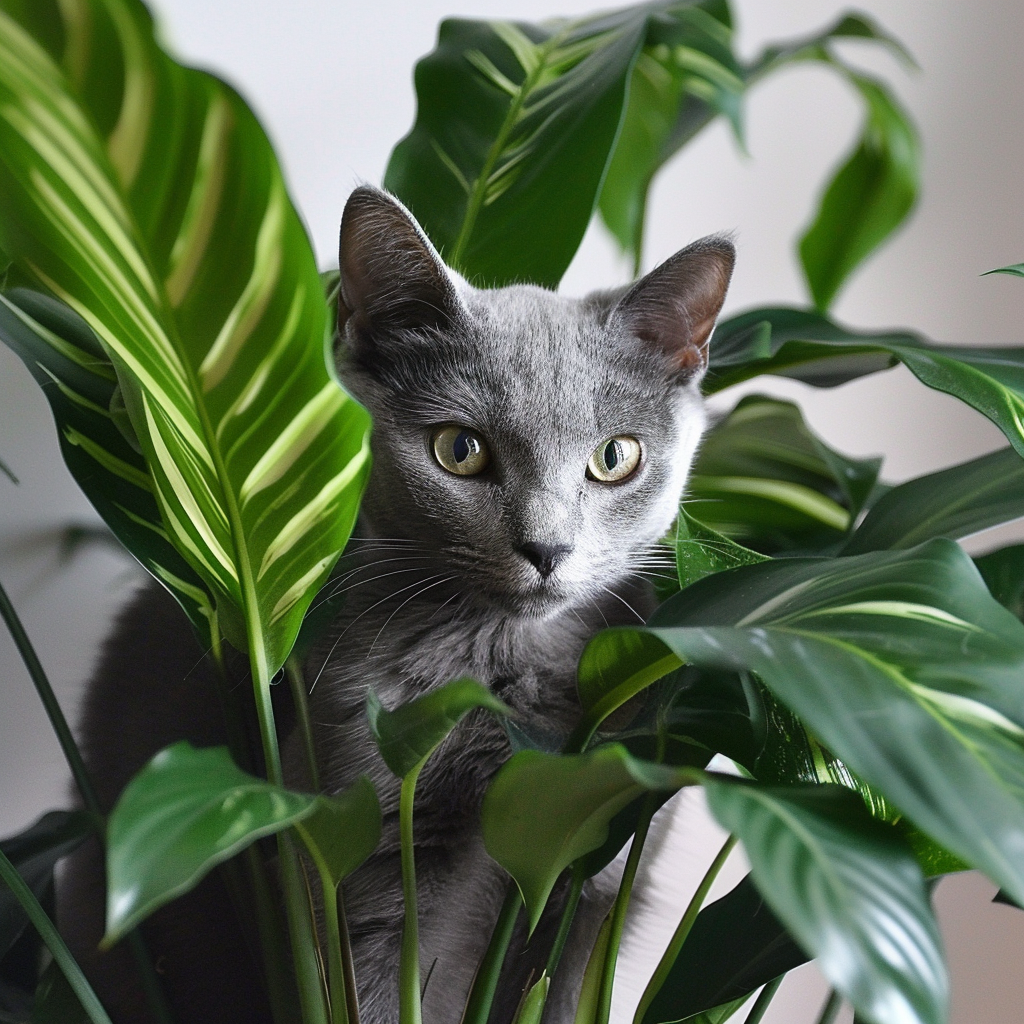Important: Toxic Plants

In our shared love for the majestic Russian Blue breed here in vibrant London, it’s crucial to keep our indoor sanctuaries safe havens for our beloved feline companions. Among the comforts of home, however, hide potential hazards in the form of toxic plants and flowers. Let’s uncover the dangers posed by some common flora that may find their way into our indoor spaces:
1. Lilies: These elegant blooms, often adorning bouquets, pose a grave threat to our curious cats. All parts of the lily, including petals, leaves, pollen, and even the water in the vase, contain toxins that can lead to acute kidney failure if ingested. Ensure these beauties remain out of reach.
2. Dieffenbachia (Dumb Cane): With its broad, variegated leaves, the Dieffenbachia adds a touch of tropical charm to indoor spaces. However, its sap contains calcium oxalate crystals, causing intense burning and swelling if chewed on by cats. Keep this “dumb” plant away from curious whiskers.
3. Sago Palm: Despite its exotic allure, the sago palm harbors a dark secret. Its seeds contain cycasin, a toxin that wreaks havoc on a cat’s liver, often with fatal consequences. This palm is better admired from afar, away from inquisitive paws.
4. Peace Lily: While its delicate white blooms may exude tranquility, the peace lily harbors a toxic secret. Ingesting any part of this plant can cause irritation to the mouth and throat, leading to drooling, vomiting, and difficulty swallowing for our curious cats. Opt for pet-safe alternatives instead.
5. Philodendron: With its lush, trailing vines, the philodendron is a popular choice for indoor greenery. However, its leaves contain calcium oxalate crystals, causing irritation and swelling if chewed on by cats. Keep this plant out of reach or consider safer alternatives for your indoor jungle.
6. Pothos: Another favorite for indoor spaces, pothos vines add a touch of greenery to any room. However, they contain the same calcium oxalate crystals as philodendrons, posing a similar risk to our curious companions. Exercise caution and opt for pet-friendly alternatives if possible.
These are just a few examples of toxic plants and flowers that may find their way into our indoor gardens. It’s essential to be vigilant and research any new additions to ensure they’re safe for our furry friends. By creating a space that nurtures both our love for plants and our commitment to our feline companions’ well-being, we can cultivate a harmonious environment where they can thrive.
Wishing you and your Russian Blues a home filled with safety, serenity, and plenty of purrs.
